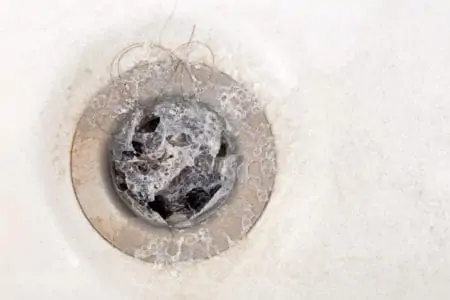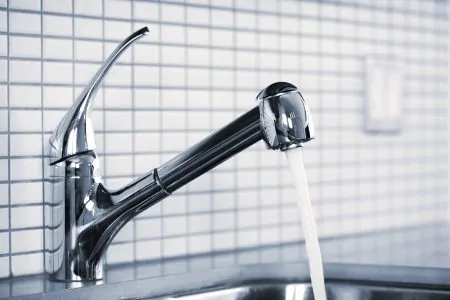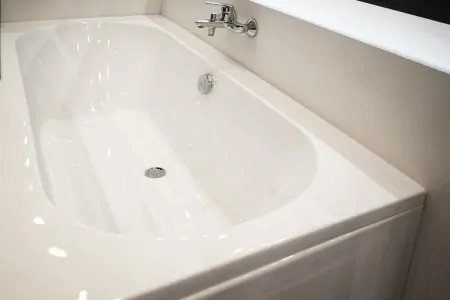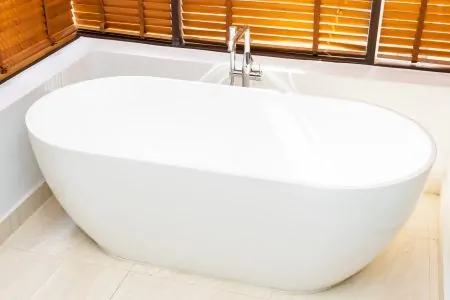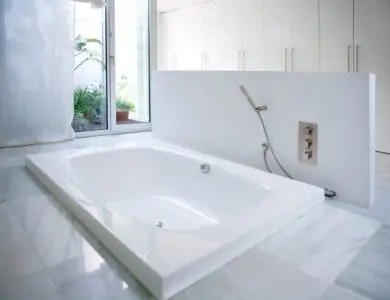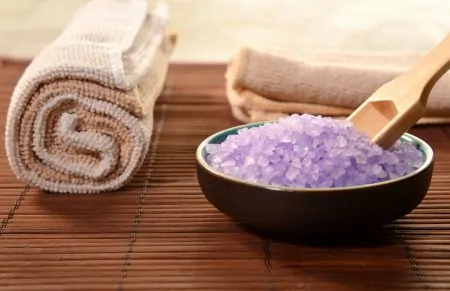When your bathtub won’t drain, it can lead to bigger complications like water overflowing and possibly flooding. Your bathtub not draining is a sign of a blockage, so before you call in the plumber, here’s what you can do.
We examine the reasons why your bathtub clogs and offer solutions, showing you how to unclog a bathtub drain.
Key Takeaways
- Common causes of bathtub clogs include a stuck built-in stopper, clogs in the drain pipes, hard water build-up, and tree roots.
- Effective unclogging methods are flushing the drain with boiling water, using a plunger, using a plumbing snake, and combining baking soda with vinegar or salt.
- Maintain your bathtub drain by using non-oil-based bath products, fitting a drain cover or strainer, cleaning debris regularly, and using baking soda and vinegar or boiling water every few weeks.
- Call a plumber if you’ve tried all methods and the blockage persists, or if you’re concerned about causing more damage.
Is Standing Water Dangerous?
Standing water is a breeding ground for flies, mosquitos, and other critters that spread disease. Even after a few hours, standing water causes mold and mildew to grow, which is bad for your health because it encourages lung complaints like asthma.
And it’s not just you or your family at risk; mosquitoes and flies are also a danger to your pets.
Reason Why Your Bathtub Won’t Drain
Blocked bathtubs are a real pain, but finding the solution might take a bit of investigative work. Let’s look at the most common causes of your bathtub not draining.
The Built-In Stopper Is Stuck
Most bath and shower combos have a built-in stopper so that you can drain the water when you want and fill it for a long soak in the tub. The most common types of bathtub stopper are:
- Push and pull knob.
- Twist and lift.
- Trip lever.
- Pop up.
If you think the stopper is the culprit, grab a pair of pliers and pull it out of the drain hole. Make sure it isn’t clogged with hair, soap scum, or limescale. If it is, it may be the reason why your bathtub won’t drain.
There Is a Clog in the Drain Pipes
Another place to look for the causes of a blockage is the drain pipes. Your bathtub will develop a clog in the pipes at some point in its life, especially when you consider the amount of abuse it gets from your bathing regime.
So, what might you find lurking inside your blocked pipes?
- Clogged hair.
- Soap residue.
- Cleaning products.
- Dirt and sand.
- Shaving cream or gel.
- Shampoo and conditioner suds.
- Bottle caps and disposable razor blades.
- Septic build-up.
In most instances, the blockage will sit at the top of the drain and is easily accessible with your fingers. If it is further down, you may need to unscrew the drain stopper and lift it out to get at the offending item.
Top Tip
Use extreme caution because you may accidentally force the mass further inside the drain.
Hard Water Build-Up
Sometimes, you just live in a “hard water” area, where high quantities of magnesium or calcium are present in the water. If you aren’t sure if you live in such an area, take a peek inside your kettle.
You should see a white chalky residue coating the walls and base of the kettle. That is mineral build-up, and just imagine what it is doing to the inside of your pipes. Plus, when hair and soap scum drain away, those sharp edges are perfect for catching the hair and creating a blockage.
And the damage is not restricted to the inside of your pipes. Over time it could lead to corrosion, which causes significant damage to your pipes.
You can get pH tests to determine the mineral content of your water, and the pipes are easy to clean, but in the long run, it might be an idea to fit a water softener to filter away the minerals before it reaches your drain.
Tree Roots
Roots can grow over a long time, penetrating pipework buried in the soil. As they grow in the pipes, they cause blockages, which then slows the way the water drains from your bathtub.
6 Ways How To Unclog Your Bathtub Drain
Knowing the best methods for unclogging your drain makes fixing the problem easier. So, what are our top 6 recommendations?
1. Flush the Drain With Boiling Water
Boiling water is an excellent solution. It delivers a short, sharp shock to the blockage, using a combination of water pressure and heat to remove debris. Hold the kettle at least 3 feet above the tub drain and pour out the entire contents.
Any gloopy soap residue that binds hair and other debris should melt under the heat and slide down the drain. It might not clear large physical blockages, but for smaller items, it might just do the trick.
Take Caution
Don’t try this method if you have PVC pipes, as it may melt or soften the joints.
2. Use a Plunger
Sometimes you need a bit of brute force to clear the blockage. Plungers are the perfect tool to use. Before you start, remove the overflow cover and jam a piece of rag in the opening. Make sure you drain away any excess water.
The rag will get pushed out with the force of the plunger if you have an airtight seal, so make sure you hold it in place with your finger.
Keep at it because plunging might not seem like it’s working, but if you are successful, you will hear the water drain away. To make double sure the blockage is gone, pour some hot water into the drain.
3. Use a Plumbing Snake
You will want a snake with at least a 0.25-inch diameter cable. First, remove the overflow plate and insert the snake, taking care to hold the snake with one hand and direct it with the other. As it slides in, you should feel any blockage.
Work slowly, making sure the cable stays straight and doesn’t kink. Pull the cable out a little if you feel it start to twist. It could be the blockage, so to be sure, pull it out and then slowly push it back in until you feel the blockage again.
Most tub drain lines are no more than 10 feet long, so if you have inserted more than that in the overflow, there’s a good chance that the blockage is further down the pipes, and you are working your way along the vent line after hitting the trap.
Top Tip
Don’t feel tempted to snake from the main drain as you risk damaging the pipework.
4. Baking Soda and Vinegar
Pour a cup of baking soda down the drain. To make sure it gets all the way in, use a funnel if you have to. Next, pour half a cup of white vinegar into the drain and wait for the fizzing to start. Cover the drain until it stops bubbling, and then wait for 30 minutes.
Grab a kettle of boiling water if you have pipes that can cope or hot water for PVC pipework, and pour it down the drain. If the water backs up out of the drain, repeat the baking soda and vinegar process until the blockage is gone.
Once you clear the blockage, run the hot tap to push the debris down the drain and into the sewer.
5. Salt and Baking Soda
If you don’t have any vinegar to hand, salt works just as well with baking soda. Pour a cup of baking soda into the drain as you did in the previous method. Now mix half a cup of baking soda and salt and throw that down the drain.
This technique requires real patience because you have to leave it to work its magic for a couple of hours. If you can, leave it overnight to get the full effects of the salt and baking soda mix.
The following morning, pour in a kettle of boiling or hot water, depending on what pipework you have, and watch as the water drains away. If it is successful, run the hot tap to help ease the blockage down the drain.
6. Use Chemical Clog Remover
This is the most environmentally damaging method. Also, chemical unblockers are highly toxic, so it might be an idea to put on safety gloves and a face mask before attempting this technique. Using chemicals should always be the last resort.
You can pick up a chemical unblocker from any hardware store, but you should only get a product designed for bathtub drains. If you get the wrong one, you might cause damage to your pipework.
Please read the instructions carefully before pouring it down the drain. Most chemical removers tell you to wait between 30 minutes and an hour before flushing it down with cold water.
How To Prevent Future Clogs
Sorting out a blockage is one thing, but preventing it from happening again is the best policy. Avoid using oil-based bath products, and if you do, make sure you flush it away using hot water. Fit a drain cover or strainer to catch any objects before they fall into the drain. It is also a good way of catching stray hairs.
When you see a build-up of debris around the drain, clear it away before it becomes a problem. Another good policy is to regularly maintain your bathtub drain using baking soda and vinegar. It ensures your drain stays clear of blockages.
Pouring boiling water down the drain every few weeks is another policy you should adopt.
Can I Use Bleach To Unclog the Bathtub Drain?
You can use bleach to unclog a bathtub drain, but try to use eco-friendly products that dissolve hair and soap scum but don’t damage the environment. Also, check the label on the bleach to make sure it is compatible with your pipework.
When using bleach, make sure you wear protective gloves because if it splashes on you, it burns.
When To Call a Plumber
Sometimes, you have to admit defeat and understand your limitations. Once you’ve worked through the list above, tried everything and the blockage is still there, it’s probably more serious, or you run the risk of doing more harm than good.
When you feel your frustration levels climb and your patience wearing thin, bite the bullet and reach for the phone. A decent plumber should have your bathtub drain unblocked in no time at all.
